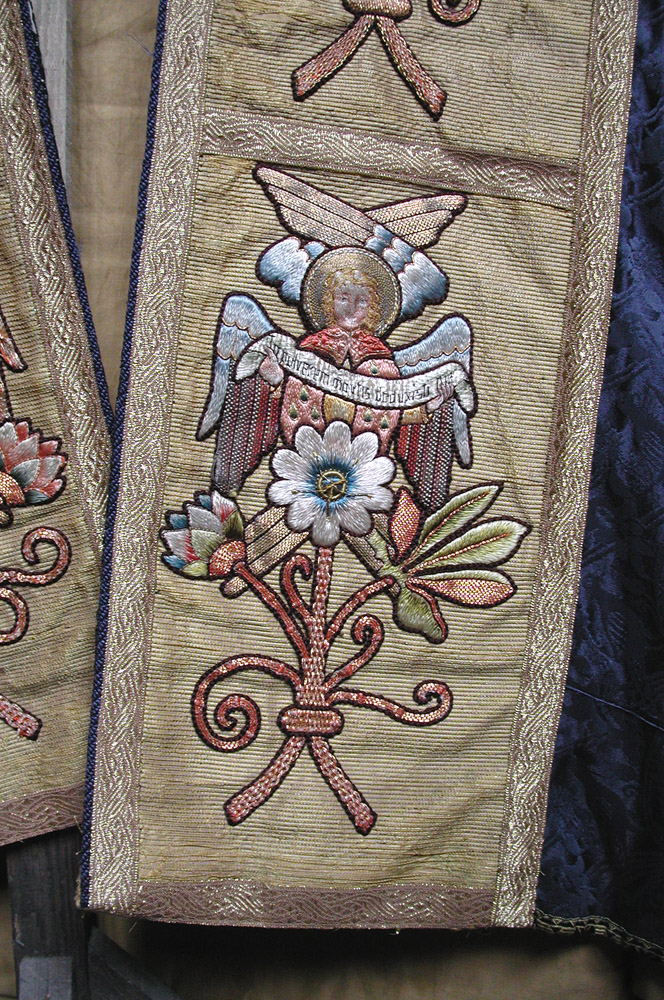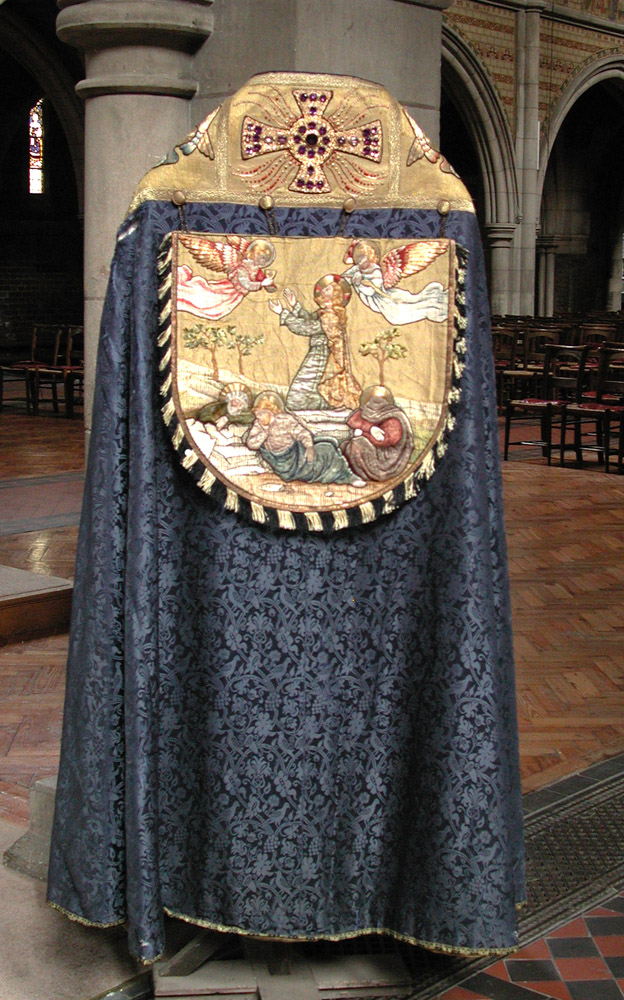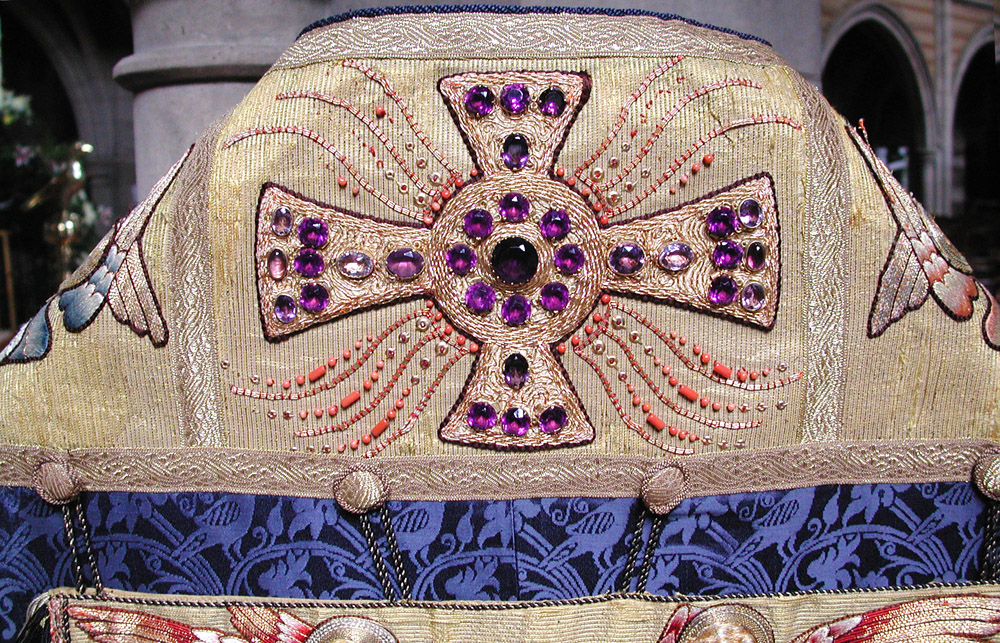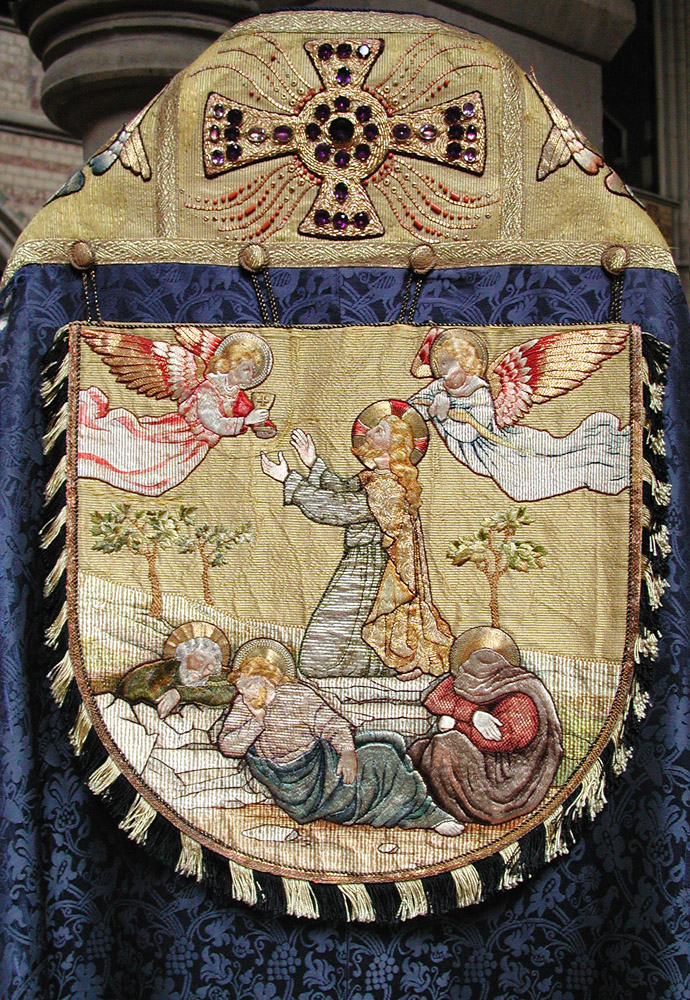


Embroidery on a blue cope at St Augustine's Church, Kilburn, London NW6. [Click on the images to enlarge them.]



Among the liturgical colours, blue was important: "It seems to have been customary, from the inventories found in large parochial churches and cathedrals, to use blue very largely," says Dr. J. Wickham Legg. "The dark blue — what we would now call purple or indigo — would be appropriate for more solemn seasons, the light and brighter blue for ordinary seasons, and they would doubtless have been used on unoccupied days when there was no particular colour ordered, that is to say, on the ordinary week days" (91). This is clearly the darker blue, and very richly ornamented, especially in the morse, or ornamental clasp across the top, which could be studded, as here, with precious or semi-precious stones. This complements the richly embroidered strip (or orphrey) at the edges of the cope (see Spiller).
In this case, the back of the orphey is also jewelled and beaded. There was still much scope for embroidery, as seen in the angel motif on the orphrey: angels with folded wings, above bouquets of flowers and leaves, hold appropriate texts. The fringed token hood attached to the back of the orphrey has a particularly vibrant scene: Jesus in the Garden of Gethsamene, reaching up his hands to receive the chalice from the angels, while his weary disciples sleep on, oblivious to the miraculous moment, and to what lies ahead.
Photographs by John Salmon, with thanks to St Augustine's Church; text by Jacqueline Banerjee. You may use the images without prior permission for any scholarly or educational purpose as long as you (1) credit John Salmon and (2) link your document to this URL in a web document or cite the Victorian Web in a print one.
Related Material
Bibliography
Legg, Dr. J. Wickham. "Notes on the History of the Liturgical Colours." Transactions of St Paul's Ecclesiological Society. 1885. 95-134. Google Books. Free Ebook.
Spiller, Leonard. Some Notes on Copes. London: The Warham Guild, 1939. Project Canterbury. Web. 28 April 2021.
Created 27 April 2021